iPhone 6S Plus Review
iPhone 6S Plus Review
A truly innovative phone
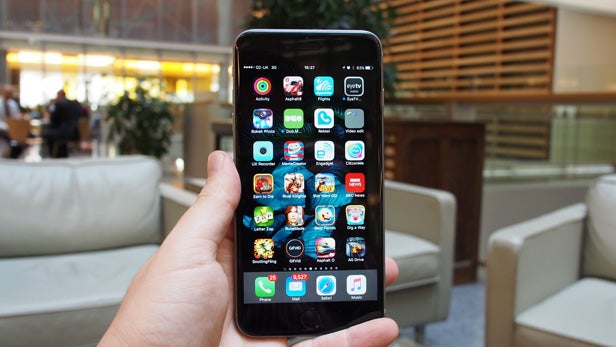
Sections
- Page 1 iPhone 6S Plus Review
- Page 2 Camera, Live Photos, 4K video Review
- Page 3 Performance, Features, iOS9 Review
- Page 4 Battery Life, Verdict Review
Verdict
Pros
- 3D Touch is awesome
- Stupendous performance
- Two great new cameras
- Solid battery life
Cons
- Still too big
- No fast-charging
- 16GB version isn't big enough
Key Specifications
- Review Price: £619.00
Living with the iPhone 6S Plus
I’ve been using the iPhone 6S Plus since its release in September and my opinion of Apple’s most expensive phone has changed very little. This is the best ‘S’ version phone the company’s ever made.
Let’s start with everything it’s great at…
Related: iOS 11 review: Apple’s best update in years?
The camera is a joy. It’s perfect for taking quick snaps and provides excellent photos with a realistic palette. I like my photos to have a colour tone that matches what I can see, but the camera app comes with plenty of filters if you like to pimp your pics.
Other phones are better in low light – in particular the Samsung Galaxy S7 which is a truly superb phone too.
The iPhone 6S Plus is also as snappy now as it was the first day I took it out of the box, even though I’ve loaded it with more apps than I’ll ever have time to use. This is a great phone for gaming – not least because the 5.5-inch screen provides plenty of pixel-packed real estate.
I’ve also come to love Live Photos. Initially I thought adding a little movement to images was a bit of a gimmick, but iOS updates have improved them and now you can upload to most social media apps. Movement also brings your gallery to life.
Related: Galaxy Note 7 hands-on – Samsung’s best phablet?
And while the IPS screen may not reach the heights of the OLED displays on the LG G5 and S7, it’s still plenty sharp and bright. I can happily read websites and emails even in the brightest sunlight. I also regularly find myself watching my favourite shows on the go.
The iPhone 6S Plus’s battery life is also solid. It’s definitely dropped from when it was brand new, when I’d regularly get home after a day at the TrustedReviews offices with more than 50% left. Now it’s more like 30%.
This may have to do with the battery losing some of its prowess after a few hundred recharges, but it’s more likely the fact that I use more apps with background services and that I game more (Top tip: Clash Royale is highly addictive). Regardless, this is still the iPhone to get if you value stamina, although surprisingly the diminutive iPhone SE also does a solid job. The 4.7-inch iPhone 6S is the weakest in this regard.
Related: How to improve iPhone battery life
There’s very little I don’t like about the iPhone 6S Plus, but that doesn’t mean it’s perfect.
The design is still a little wanting. It’s sleek and easy to handle, but it doesn’t make a bold statement like the HTC 10, and neither does it manage to cram a big screen into a small body like many of its Android competitors.
There are also a few software issues that bug me. The main culprit is Spotlight search which often decides it doesn’t want to find an app I’m looking for, but the iPhone 6S Plus occasionally freezes when someone is calling me. Thankfully these annoying issues are rare.
Lastly, 3D Touch, a feature I used a lot at first, has fallen by the wayside. By pressing the screen harder you can get more menu items to appear which is useful, but for some reason I’ve ended up using it less and less as time’s gone on. It’s the exact opposite of Live Photos, which I now don’t want to live without.
Related: iPhone XR
iPhone 6S Plus long-term verdict
I’m still very happy with the iPhone 6S Plus. I’ve used a number of phones at the same time as conducting this long-term test and I still find myself reaching for the 6S Plus, mainly because of its ease of use and app library. It does everything you want it to with a minimum of fuss – important if you live a busy lifestyle and don’t particularly care about tinkering with your smartphone.
If you can handle its size and price then the 6S Plus is the iPhone I recommend. Go for the 64GB model, though – 16GB just isn’t enough. It’s also worth remembering that the iPhone 7 is only a few months away.
Read on for the original iPhone 6S Plus review
Related: iPhone 8
What is the iPhone 6S Plus?
The iPhone 6S Plus is Apple’s second phablet, and like last year’s model it’s properly big.
The 5.5-inch screen is the biggest you can get on an iPhone and a massive step up if you’re used to an iPhone 5S. It takes some getting used to.
Usually ‘S’ models of the iPhone tend to have a few small additions over the previous phone. This year, though, Apple has made some serious improvements to the iPhone 6S Plus that make it more interesting compared to what we’ve become accustomed to.
The 4S and 5S introduced useful additions, the first with Siri and the second with Touch ID. A few other performance improvements were thrown in for good measure.
These were good phones, but they didn’t particularly excite the imagination.
Related: iOS 10 release date
The iPhone 6S Plus looks to have gone down the same road, at first glance that is. It looks almost identical to last year’s phone barring a new Rose Gold colour.
Spend a little time with it, though, and you quickly realise that the iPhone 6S Plus comes with significant improvements in all the areas you’d expect and some you wouldn’t. So aside from a boost in performance, plus a better camera and build quality, we’ve also been treated to a potentially ground-breaking innovation – 3D Touch.
Just like the iPhone 6S this is a very good phone.
iPhone 6S Plus – Design
158.2 x 77.9 x 7.3 mm, 192g, Nano-SIM, aluminium 7000
If there’s one are the iPhone 6S Plus could be stronger it’s design.
Don’t get me wrong: This is a very well-made phone. Every part of it fits together beautifully, and Apple has ensured that there will be no more “bendy iPhone” complaints by using a new, much tougher aluminium for the body.
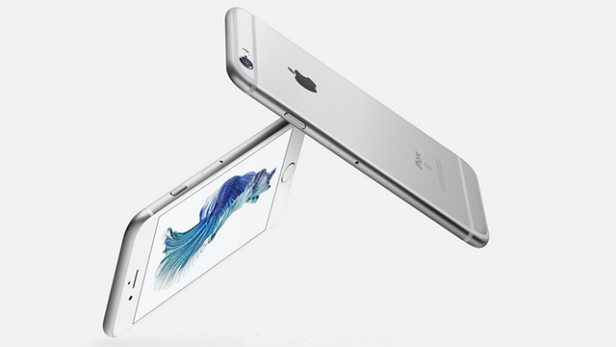
The lightly textured and slim handset is grippy, and surprisingly comfortable to hold for such a big phone. There are no awkward edges; just smooth, flowing curves that fit nicely in your palm.
The problem with the iPhone 6S Plus is the size of its top and bottom bezels. Where the LG G4 manages to cram a 5.5-inch screen in a body that’s more phone-like rather than a phablet, the 6S Plus feels unwieldy.
Related: Best iPhone Deals
The 6S Plus has a screen-to-body ratio of 68%, whereas the curved-screened 5.7-inch Samsung Galaxy S6 Edge+ – the 6S’s closest competitor – has a ratio of almost 76%. That means more screen for its size.
It’s height takes a little getting used to as well. It took me around a week to get comfortable with the original Plus; others may find it just too big in hand and in pocket.
Apple is aware of this and so has included a feature that lets you drop what’s on screen closer to your thumb. Gently tap the home button twice and out-of-reach icons become instantly accessible.
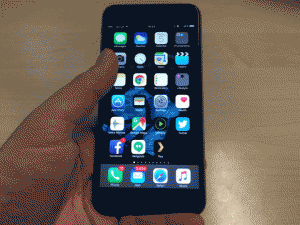
It doesn’t solve everything – I still struggle to reach the bottom left corner of the screen with my right thumb – but it’s a useful feature.
The 6S Plus is also heavy, 20g more so than the iPhone 6 Plus before it. The extra weight is due to the new Taptic Engine used with 3D Touch – and it isn’t necessarily a bad thing. I like weighty phones – they feel more substantial; others might find it a little too cumbersome, however.
iPhone 6S Plus – 3D Touch and Screen
1,920 x 1,080 pixels, 5.5-inch LCD IPS screen, Ion-X toughened glass, 3D Touch
The 6S Plus uses the same display as last year’s phone, and very good it is too.
The Full HD 5.5in screen is both bright (if a little dimmer than the last model at full brightness) and well balanced, with colours looking natural and contrast levels solid for an LCD.
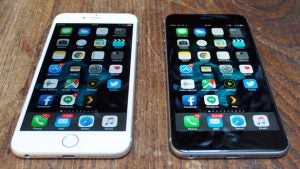
Compare it with Samsung’s latest offerings and it pales in comparison, though. The Super AMOLED displays on handsets such as the Galaxy Note 5 are a class above when it comes to vibrancy, sharpness and black levels.
Even though the iPhone 6S Plus doesn’t have the best screen, it remains great. Besides, I’m increasingly seeing diminishing returns on phones display improvements. For example, having a higher-resolution QHD screen doesn’t equate to a huge difference in the user experience.
Apple’s latest innovation does, however.
I’m excited about 3D Touch, even though it’s currently limited to a handful of features. Let’s get started with what it is and what it can do.
The original iPhone was the first to feature a multi-touch screen and it revolutionised the way we interact with our phones. Pinching, zooming and swiping were all made possible, and it was one of the most intuitive interfaces ever – even toddlers could use it.
3D Touch takes it to the next level, bringing a whole new experience to the iPhone 6S and 6S Plus by cutting out swathes of extra presses. It gets you where you want to be in iOS 9 far more quickly.
3D Touch brings three levels of pressure sensitivity to the iPhone 6S Plus user interface, so if you press harder on the screen more options appear. At first the experience is a little odd.
I’m used to lightly touching a smartphone screen, so applying significant pressure feels wrong. Give it a day or two, though, and you’ll wonder how you ever lived without it.
It works by using a pressure-sensitive display with a stronger, and more refined, Taptic Engine – the feature that makes your phone vibrate.
At the moment, 3D Touch is mostly limited to Apple apps. Touch the Camera app icon from the homescreen and, as you’d expect, the app opens. Press a little harder on the icon, though, and a host of new options appear. Want to go straight to the selfie mode? Or what about shooting slo-mo right away? They all spring to life with a heavier touch.
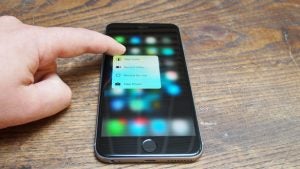
The Clock app lets you immediately create a new alarm or start the stopwatch, while the Maps app provides a quick setting to get you home, mark your location (so you don’t forget where you’ve parked) or send your location to a mate.
Hard press the spacebar when writing an email and the keyboard transforms to a touchpad, so you can easily move the cursor to a specific part of the message to sort out a typo.
It all sounds simple, and it is, but it’s also a huge step forward in how you interact with apps. It’s a bit like having a right mouse button at your fingertips and it opens up a host of new possibilities.
Few third-party apps support 3D Touch at the moment, but don’t let that concern you. App developers now have access to 3D Touch, so you can expect a whole host of new features to soon appear on all your favourites.
There are a few that have taken advantage of the new feature already, and one of the best examples is the futuristic racer AG Drive.
It shows just how clever 3D Touch is. Controls aren’t limited to just slow/fast – it’s actually analogue, so when it comes to accelerating your hovership, the harder you press, the faster you’ll go.
It’s worth mentioning the curved-screened Galaxy S6 Edge+ here – after all, it’s the 6S Plus’ main competitor. The edges of the Samsung do make it achingly pretty, but they serve very little function. By contrast, 3D Touch provides zero visual excitement but plenty of great uses.
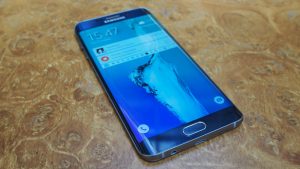
The Samsung Galaxy S6 Edge+ has curved sides
Apple has improved the connectivity on the iPhone 6S Plus so that Wi-Fi is more reliable and faster than ever before. It also comes with 4G and the latest Bluetooth 4.2 standard. As always with iPhones, however, it lacks a microSD slot.
This means you’ll need to carefully consider which version of the iPhone 6S Plus you’ll opt for. The 16GB version (£619) really won’t stretch far at all – some photos, a few games and a bit of music and you’ll be clamouring for the delete key.
The 64GB version (£699) should be ample for most, with the 128GB 6S Plus (£789) perfect for those who like carrying a large movie or music library with them.
What is the iPhone 6S Plus?
The iPhone 6S Plus (not to be confused with the upcoming iPhone 7) is Apple’s second phablet, and like last year’s model it’s properly big.
The 5.5-inch screen is the biggest you can get on an iPhone and a massive step up if you’re used to an iPhone 5S. It takes some getting used to.
Usually ‘S’ models of the iPhone tend to have a few small additions over the previous phone. This year, though, Apple has made some serious improvements to the iPhone 6S Plus that make it more interesting compared to what we’ve become accustomed to.
The 4S and 5S introduced useful additions, the first with Siri and the second with Touch ID. A few other performance improvements were thrown in for good measure.
These were good phones, but they didn’t particularly excite the imagination.
Related: iOS 10 release date
The iPhone 6S Plus looks to have gone down the same road, at first glance that is. It looks almost identical to last year’s phone barring a new Rose Gold colour.
Spend a little time with it, though, and you quickly realise that the iPhone 6S Plus comes with significant improvements in all the areas you’d expect and some you wouldn’t. So aside from a boost in performance, plus a better camera and build quality, we’ve also been treated to a potentially ground-breaking innovation – 3D Touch.
Just like the iPhone 6S this is a very good phone.
iPhone 6S Plus – Design
158.2 x 77.9 x 7.3 mm, 192g, Nano-SIM, aluminium 7000
If there’s one are the iPhone 6S Plus could be stronger it’s design.
Don’t get me wrong: This is a very well-made phone. Every part of it fits together beautifully, and Apple has ensured that there will be no more “bendy iPhone” complaints by using a new, much tougher aluminium for the body.

The lightly textured and slim handset is grippy, and surprisingly comfortable to hold for such a big phone. There are no awkward edges; just smooth, flowing curves that fit nicely in your palm.
The problem with the iPhone 6S Plus is the size of its top and bottom bezels. Where the LG G4 manages to cram a 5.5-inch screen in a body that’s more phone-like rather than a phablet, the 6S Plus feels unwieldy.
The 6S Plus has a screen-to-body ratio of 68%, whereas the curved-screened 5.7-inch Samsung Galaxy S6 Edge+ – the 6S’s closest competitor – has a ratio of almost 76%. That means more screen for its size.
It’s height takes a little getting used to as well. It took me around a week to get comfortable with the original Plus; others may find it just too big in hand and in pocket.
Apple is aware of this and so has included a feature that lets you drop what’s on screen closer to your thumb. Gently tap the home button twice and out-of-reach icons become instantly accessible.

It doesn’t solve everything – I still struggle to reach the bottom left corner of the screen with my right thumb – but it’s a useful feature.
The 6S Plus is also heavy, 20g more so than the iPhone 6 Plus before it. The extra weight is due to the new Taptic Engine used with 3D Touch – and it isn’t necessarily a bad thing. I like weighty phones – they feel more substantial; others might find it a little too cumbersome, however.
iPhone 6S Plus – 3D Touch and Screen
1,920 x 1,080 pixels, 5.5-inch LCD IPS screen, Ion-X toughened glass, 3D Touch
The 6S Plus uses the same display as last year’s phone, and very good it is too.
The Full HD 5.5in screen is both bright (if a little dimmer than the last model at full brightness) and well balanced, with colours looking natural and contrast levels solid for an LCD.

Compare it with Samsung’s latest offerings and it pales in comparison, though. The Super AMOLED displays on handsets such as the Galaxy Note 5 are a class above when it comes to vibrancy, sharpness and black levels.
Even though the iPhone 6S Plus doesn’t have the best screen, it remains great. Besides, I’m increasingly seeing diminishing returns on phones display improvements. For example, having a higher-resolution QHD screen doesn’t equate to a huge difference in the user experience.
Apple’s latest innovation does, however.
I’m excited about 3D Touch, even though it’s currently limited to a handful of features. Let’s get started with what it is and what it can do.
The original iPhone was the first to feature a multi-touch screen and it revolutionised the way we interact with our phones. Pinching, zooming and swiping were all made possible, and it was one of the most intuitive interfaces ever – even toddlers could use it.
3D Touch takes it to the next level, bringing a whole new experience to the iPhone 6S and 6S Plus by cutting out swathes of extra presses. It gets you where you want to be in iOS 9 far more quickly.
3D Touch brings three levels of pressure sensitivity to the iPhone 6S Plus user interface, so if you press harder on the screen more options appear. At first the experience is a little odd.
I’m used to lightly touching a smartphone screen, so applying significant pressure feels wrong. Give it a day or two, though, and you’ll wonder how you ever lived without it.
It works by using a pressure-sensitive display with a stronger, and more refined, Taptic Engine – the feature that makes your phone vibrate.
At the moment, 3D Touch is mostly limited to Apple apps. Touch the Camera app icon from the homescreen and, as you’d expect, the app opens. Press a little harder on the icon, though, and a host of new options appear. Want to go straight to the selfie mode? Or what about shooting slo-mo right away? They all spring to life with a heavier touch.

The Clock app lets you immediately create a new alarm or start the stopwatch, while the Maps app provides a quick setting to get you home, mark your location (so you don’t forget where you’ve parked) or send your location to a mate.
Hard press the spacebar when writing an email and the keyboard transforms to a touchpad, so you can easily move the cursor to a specific part of the message to sort out a typo.
It all sounds simple, and it is, but it’s also a huge step forward in how you interact with apps. It’s a bit like having a right mouse button at your fingertips and it opens up a host of new possibilities.
Few third-party apps support 3D Touch at the moment, but don’t let that concern you. App developers now have access to 3D Touch, so you can expect a whole host of new features to soon appear on all your favourites.
There are a few that have taken advantage of the new feature already, and one of the best examples is the futuristic racer AG Drive.
It shows just how clever 3D Touch is. Controls aren’t limited to just slow/fast – it’s actually analogue, so when it comes to accelerating your hovership, the harder you press, the faster you’ll go.
It’s worth mentioning the curved-screened Galaxy S6 Edge+ here – after all, it’s the 6S Plus’ main competitor. The edges of the Samsung do make it achingly pretty, but they serve very little function. By contrast, 3D Touch provides zero visual excitement but plenty of great uses.

The Samsung Galaxy S6 Edge+ has curved sides
Apple has improved the connectivity on the iPhone 6S Plus so that Wi-Fi is more reliable and faster than ever before. It also comes with 4G and the latest Bluetooth 4.2 standard. As always with iPhones, however, it lacks a microSD slot.
This means you’ll need to carefully consider which version of the iPhone 6S Plus you’ll opt for. The 16GB version (£619) really won’t stretch far at all – some photos, a few games and a bit of music and you’ll be clamouring for the delete key.
The 64GB version (£699) should be ample for most, with the 128GB 6S Plus (£789) perfect for those who like carrying a large movie or music library with them.
How we test phones
We test every mobile phone we review thoroughly. We use industry standard tests to compare features properly and we use the phone as our main device over the review period. We’ll always tell you what we find and we never, ever, accept money to review a product.


